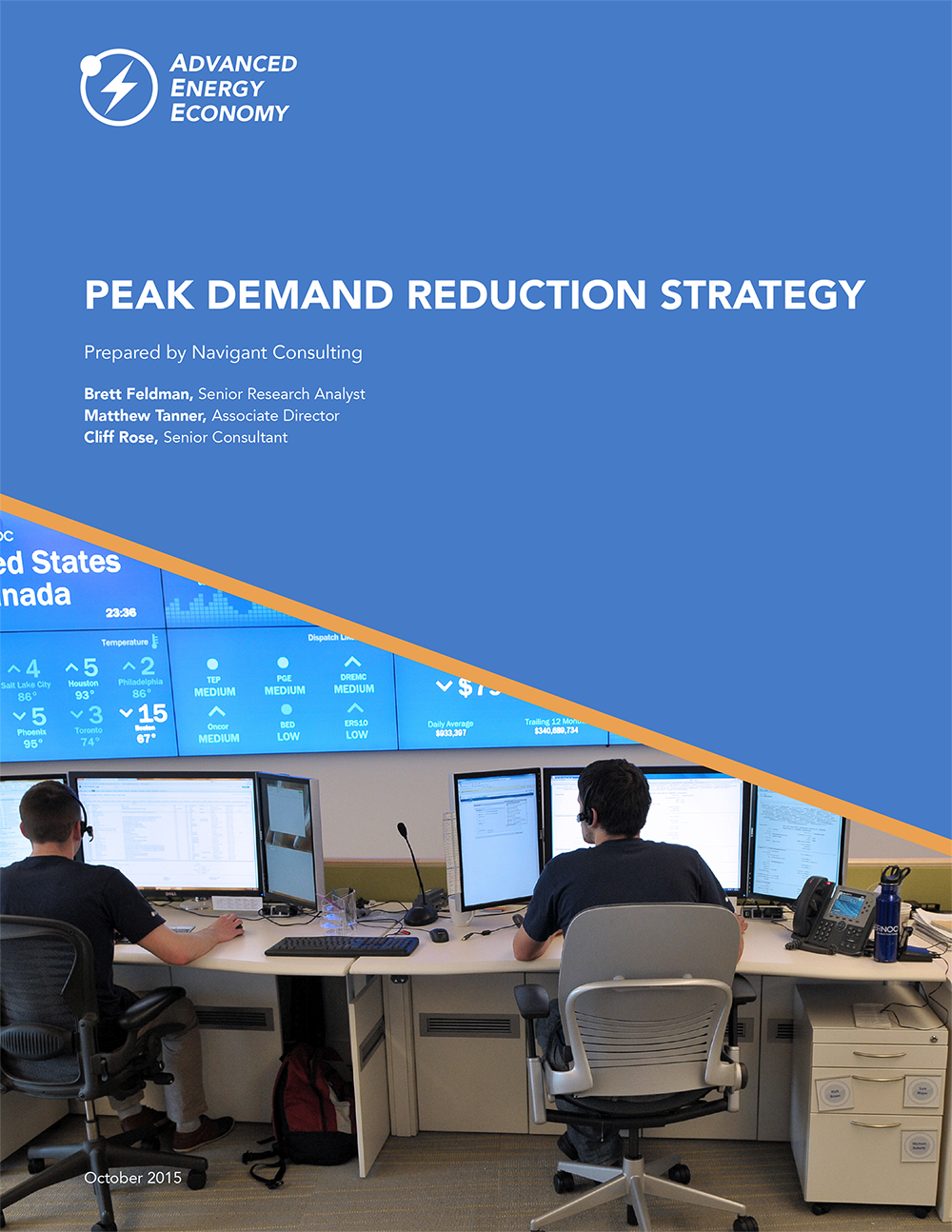by Brianna Crandall — November 6, 2015—Advanced Energy Economy (AEE), a national business association, recently released a new report, Peak Demand Reduction Strategy, showing that states that implement peak demand policies or programs can significantly reduce costs for customers, strengthen reliability of electric service, and ease compliance with EPA’s Clean Power Plan.

Analysis of potential for demand response in Illinois and Massachusetts shows economic benefits from curbing energy use during peak periods
Demand for electricity can spike during just a few hours a year, and typically 10 percent of our electric system capacity is built to meet demand in just one percent of hours during the year. This comes at a significant cost to consumers. The report, prepared for AEE by Navigant Consulting, finds that for every $1 spent on reducing peak demand, at least $2.62 can be saved by ratepayers in Illinois and $3.26 by ratepayers in Massachusetts.
Demand response (DR)
A proven tool for reducing peak demand is demand response (DR). DR enables grid operators and electric utilities to relieve stress on the electricity distribution system by compensating commercial, industrial, and residential customers for curtailing electricity use at times of peak demand or system emergency.
Companies such as Boston-based EnerNOC and Arlington, VA-based Opower provide DR services to electric utilities and grid operators across the world, including in the New England and Midwestern region. Despite DR’s proven reliability and cost-effectiveness, it remains underutilized in these regions.
According to the report:
By passing peak demand reduction mandates into law or creating peak demand reduction programs, policymakers and utilities in Massachusetts, Illinois, and neighboring states could significantly reduce costs for ratepayers, strengthen reliability, and facilitate compliance with the Clean Power Plan.
Peak Demand Reduction Strategy
Peak Demand Reduction Strategy, available for free download from AEE, evaluates the benefits and costs of reducing peak demand in two states, Illinois and Massachusetts, and the feasibility of utilities to procure the resources to meet demand reduction goals over 10 years.
In each of three scenarios, the cost-benefit ratio is highly positive, with the ratio of benefits to cost increasing as the standard rises. The paper also highlights the importance of continued DR participation in wholesale markets, as many of the benefits of peak demand reduction policies are realized through wholesale market participation.
Massachusetts
This month, the Massachusetts Department of Public Utilities (DPU) will receive final three-year energy efficiency plans from the Commonwealth’s investor-owned utilities. These plans, and the approval process of the DPU, will determine the size and design of the DR market moving forward, according to the report.
Illinois
For the past year, policy makers in Illinois have been considering comprehensive reforms to the state’s energy policy including changes to the state’s energy efficiency and renewable energy programs. While Illinois is a state with a wholesale market structure that accommodates DR, as well as overall energy efficiency measures that can lower demand overall, it has not yet set a meaningful standard for demand response, according to the report.
Sectors
Utilities can achieve reduction in peak load through a variety of technologies in the commercial, industrial and residential sectors. Historically, demand response has been used in the commercial and industrial sectors. Peak load reduction measures are customized for each facility and can include turning lighting, air conditioning, pumps and other non-essential equipment down or off without affecting business operations, comfort, or product quality.
EnerNOC President David Brewster concluded:
This report underscores the fact that not all kilowatt-hours are created equal. Managing how much energy is used — and, as importantly, when it is used — can drive significant value for consumers. Policymakers and utilities searching for ways to quickly bring down electricity costs in their jurisdiction should consider these findings and implement policies and programs that reduce peak demand.




